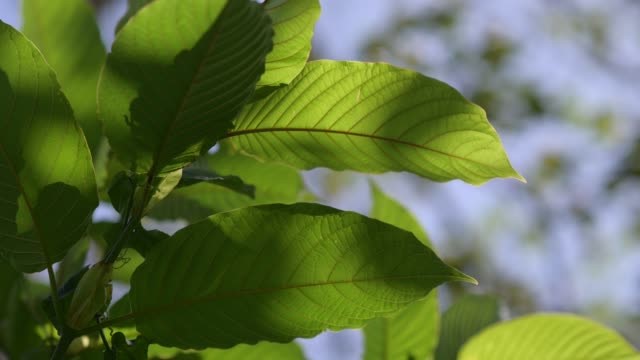Updates
Mitragyna Hirsuta, an Alternative to Kratom
Mitragyna hirsuta, also known as “kra thum khok,” is a tropical tree native to Cambodia, Thailand, and Vietnam. It belongs to the same plant family as Kratom (Mitragyna speciosa) and has a long history of use in traditional medicine in Southeast Asia. Like Kratom, M. hirsuta contains several psychoactive compounds, including mitraphylline, rhynchophylline, and hirsutine, which are thought to contribute to its effects on the body.
1.hirsuta has traditionally been used to treat a variety of conditions, including diarrhea, fever, and high blood pressure. It has also been used as a stimulant to increase energy and improve mental clarity. Some people use M. hirsuta as a natural alternative to Kratom, which is a popular psychoactive plant that has gained a reputation for its potential to help with pain, anxiety, and addiction.
Unlike Kratom, which is classified as a controlled substance in some countries and has a controversial legal status in the United States, M. hirsuta is not controlled in most parts of the world and is widely available online. However, it is important to note that M. hirsuta has not been extensively studied, and little is known about its long-term effects or potential risks.
How M. hirsuta works
The active compounds in M. hirsuta are thought to interact with the same brain receptors as Kratom, which are known as opioid receptors. These receptors are involved in the regulation of pain, mood, and other important functions. When the active compounds in M. hirsuta bind to these receptors, they may produce effects similar to those of Kratom, including:
* Pain relief: Some people claim that M. hirsuta is effective in relieving pain, including chronic pain associated with conditions such as arthritis and fibromyalgia.
* Relaxation: M. hirsuta may produce feelings of relaxation and calmness, which can be helpful for people experiencing anxiety or stress.
* Stimulation: In low doses, M. hirsuta may act as a stimulant, increasing energy and alertness.
* Opioid-like effects: Like Kratom, M. hirsuta may produce effects similar to those of opioids, including sedation and euphoria. However, it is important to note that M. hirsuta does not appear to be as potent as Kratom in this regard.
Possible risks and side effects
As with any psychoactive substance, there is a risk of experiencing side effects when using M. hirsuta. These may include:
* Dizziness
* Nausea
* Vomiting
* Dry mouth
* Constipation
* Itching
It is also important to note that M. hirsuta has not been extensively studied, and little is known about its long-term effects or potential risks. There have been no reported cases of overdose or death related to M. hirsuta, but it is possible that these could occur in rare cases.
There is also a risk of drug interactions when using M. hirsuta, as it may interact with certain medications. If you are taking any medications, it is important to talk to your doctor before using M. hirsuta or any other psychoactive substance.
Is M. hirsuta safe?
The safety of M. hirsuta is not well established, as it has not been extensively studied. While it is not controlled in most parts of the world, this does not necessarily mean that it is safe to use. As with any psychoactive substance, it is important to use caution and to be aware of the potential risks and side effects. In conclusion, M. hirsuta is a tropical tree native to Southeast Asia that has a long history of use in traditional medicine. It contains several psychoactive compounds that are thought to interact with the same brain receptors as Kratom, which may produce effects such as pain relief, relaxation, and stimulation. While M. hirsuta is not controlled in most parts of the world and is widely available online, it has not been extensively studied and little is known about its long-term effects or potential risks. As with any psychoactive substance, it is important to use caution and to be aware of the potential risks and side effects.


















